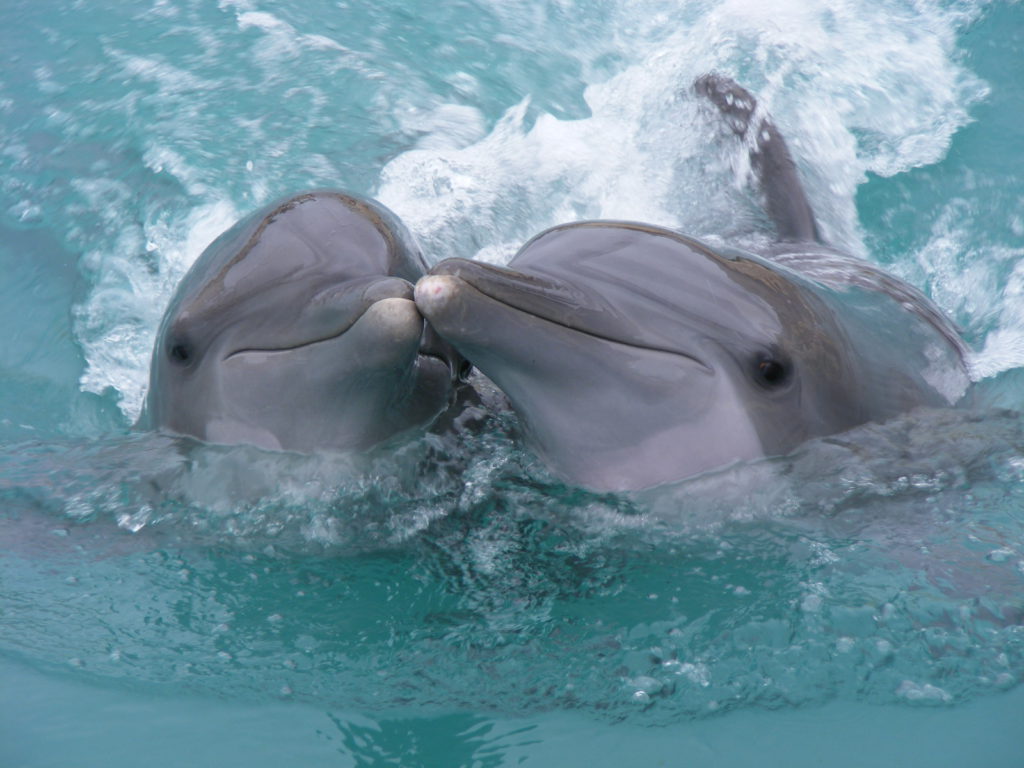Why dolphin culture really is some-fin else
Departments Research impact and institutes Water 19th October 2017
The intelligence, culture and social relationships of whales and dolphins are so advanced, the only thing stopping them from building an underwater city is opposable thumbs.
That’s the finding of the latest research from The University of Manchester, in collaboration with The London School of Economics (LSE) and Stanford University. The study, published this week in Nature Ecology and Evolution, details how the creatures live together in social groups and have complex relationships with one another. Cetaceans (the name given to the group of marine mammals that includes dolphins, whales and porpoises) chat together and even speak in regional accents.

A busy prosocial life
The researchers reveal that cetaceans are prosocial. No, this doesn’t mean they’re in favour of having an active social life (although they have exactly that!) – it means that they will voluntarily help others. They’ll even work with different species – like humans.
This type of behaviour requires a high level of intelligence and good communication skills. In fact, the communication between these animals is so advanced, they teach each other how to hunt and then hunt together as part of a team. They can also mimic each other’s voices – and even have a unique whistle to identify themselves, just as we have a name.
It’s not all work, though. Whales and dolphins also play with each other, and the adult animals help to care for the young even if they aren’t the parent.

Thumbs down
So, what’s to stop these clever cetaceans from building an underwater city like the metropolis featured in Disney’s The Little Mermaid? In fact, what’s to stop them taking over the world? The answer may surprise you.
“As humans, our ability to socially interact and cultivate relationships has allowed us to colonise almost every ecosystem and environment on the planet,” says Dr Susanne Shultz, an evolutionary biologist in Manchester’s School of Earth and Environmental Sciences. “We know whales and dolphins also have exceptionally large and anatomically sophisticated brains and, therefore, have created a similar marine based culture.”
So, dolphins not only share a sophisticated social system with humans, but a large brain too. But it takes more than intelligence and teamwork to build a city. As Dr Shultz explains: “Unfortunately, they won’t ever mimic our great metropolises and technologies because they didn’t evolve opposable thumbs.”

Big headed
One of the key reasons given for the evolution of human intelligence is our large brains. Theories like social brain hypothesis (SBH) and cultural brain hypothesis (CBH) suggest that our ancestors’ brains grew larger to help them understand the increasingly complex social environments in which they lived.
Whales and dolphins demonstrate many social behaviours shared by us and other primates, yet their brain structures are different. Because of this, some researchers had claimed that this meant cetaceans would never achieve the higher cognitive and social skills seen among groups of primates.
But this new research suggests this is far from the case and that – just as with humans – there is a link between the advanced societies and culture of cetaceans and their brain size and expansion. Dr Kieran Fox, a neuroscientist at Stanford University, says we should instead consider a new question: “How can very diverse patterns of brain structure in very different species nonetheless give rise to highly similar cognitive and social behaviours?”
And, of course, by understanding other species better, we gain a greater insight into our own intelligence. Dr Michael Muthukrishna, Assistant Professor of Economic Psychology at LSE, explains that previously when working towards a general theory of human behaviour, primates have been used as the control group. However, they are so similar to humans that using cetaceans instead makes for a more “alien” control.
We may not be visiting underwater dolphin kingdoms for a while, but they could help us to understand ourselves a little better.
Words – Hayley Cox
Images – veesees
dolphinsEarth and Environmental Sciencesevolutionintelligencesocialwhales




